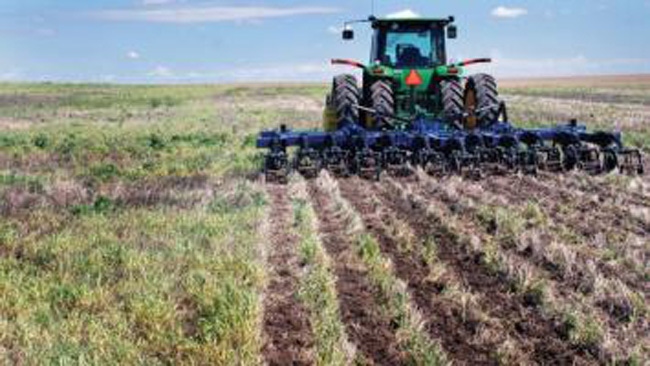April 26, 2012

Average row spacing in Illinois soybean fields has increased over the past decade after narrowing for several decades before that, according to University of Illinois crop sciences professor Emerson Nafziger.
This increase resulted from drilled soybeans – those with rows less than 10 in. apart – losing ground to 30-in. rows, which now occupy nearly 1/3 of the soybean acres. Just over 50 percent of Illinois soybean fields remain in 15-in. rows.
Most corn planters are set to plant 30-in. rows, and 15-in. soybeans are generally planted by using split-row units placed between the 30-in. rows. The increasing width of planters – many are now 60 ft. wide – means that splitting rows with additional units makes planters very heavy. Opting not to split large planters means that both corn and soybeans are typically planted in 30-in. rows.
Another reason given for moving from narrow soybean rows to 30-in. rows is that white mold tends to be more severe when the ground and the lower crop canopy stay wet. Air moves better around plants in wider rows, so soybeans in wide rows may be less susceptible to damage by white mold. Wide rows are also easier to drive through to spray or cultivate.
A U of I study over the past two years funded by the Illinois Soybean Association compared 15-in. and 30-in. soybean rows, at different planting dates and seeding rates, over six sites in Illinois. Excluding one southern Illinois site where stands were not adequate, 15-in. rows yielded on average 1.5 bu. more than 30-in. rows. This difference varied among the sites, from no difference to up to nearly four bushels per acre.
“Because late-planted soybeans tend to produce smaller plants, we had expected to find that narrower rows would tend to yield more than wide rows when planting was late,” said Nafziger. However, the data showed that response to row width was as likely with early as with late planting. Similarly, there was little interaction between row width and seeding rate.
According to Nafziger, these results suggest that choosing to plant in 30-in. rows instead of narrower rows could bring a small yield penalty. “This doesn’t mean that widening rows in order to use a larger planter is unsound, but those making the decision to do this should pencil in about 1.5 bu. less yield,” he said.
That amount is not very noticeable in the field, and some growers who make the switch may conclude that they suffered no yield loss. “We know from our research that such loss will not always occur,” said Nafziger. “But we have also found that it can, and there’s no reason to expect that it won’t, at least on average.”
There may be ways to reduce yield loss related to changing to wider rows, but the results of recent research in this area are not conclusive. “We do not believe that changing the seeding rate is likely to help,” Nafziger explained. “If incidence of disease that can be controlled by fungicide is decreased in wider rows, then we would expect fungicide application to produce less response in wide than in narrow rows.”
Choosing taller, perhaps slightly later, varieties might help the crop capture light better in wider rows. Nevertheless, it is best to choose a soybean variety based on its productivity rather than on traits for which the benefits are not certain.
You May Also Like




